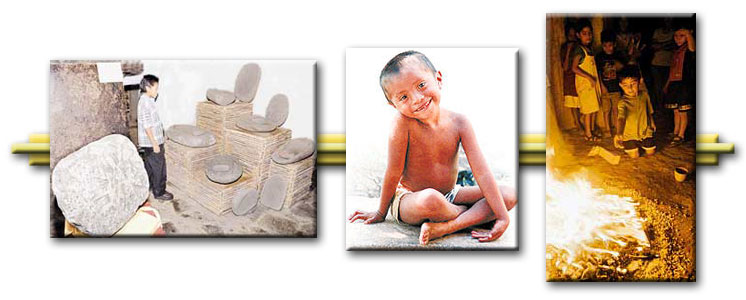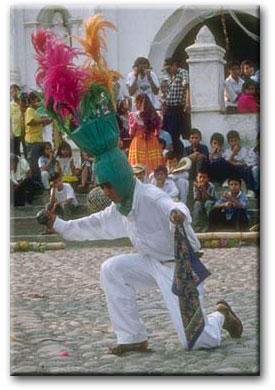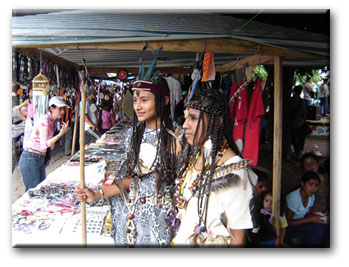
Cacaopera is known for preserving its indigenous culture with several festivals coreographed to reflect the pre-Hispanic period. The Centro de Interpretacion Eco-Cultural Maya-Kakawire cultural center is very well done and worth a visit. Their mission is to preserve the language and history of the people. Hikes to nearby petroglyphs can be arranged through their office. The center is located just outside of town about half a mile. Admission is $1.
Visit the cultural center where there is a display of artifacts and photographs from previous festivals. If you find yourself out of energy and are game to accommodations 'indigenous style,' then try a night at the Centro de Intrepretacion Eco-Cultural Maya-Kakawira. They offer dorm rooms with bunk beds and meal service can be arranged. There is no electricity, running water, or working toilets. Candles, bathing in the river, and buckets are the order of the day. You can bring your own food and cook over a wood-burning stove or fire pit that is available. It may seem inconvenient, but for one night, it is an excellent way to spend time amongst the people of Cacaopera. You will always remember this experience! Dorms cost $5.




Gateway El Salvador

Cacaopera
back to Ruta de la Paz

Casa de la Cultura (1 block from church)
Admission: free
Festival dance
Description from World Heritage site-
The community of Cacaopera is the sole surviving representative of an otherwise vanished ethnic group, variously refered to as Ulua, Matagalpa, or Cacaopera. Linguistic evidence suggests that this group originated in lower Central America, and at some point in time (but shortly before the conquest) established an enclave within the territory of eastern El Salvador. Some of the traits which continue to identify members of the community with this ethnic group are architecture, subsistence patterns, religious practices, myths, legends, and clothing styles.
The marked traditionalism of Cacaopera can be attributed, in part, to its isolation within the very mountainous terrain of northern Morazan department. This region was severely affected by the war. Many of the inhabitants of outlying hamlets relocated to Cacaopera. Cacaopera was alternatively occupied by Army and FMLN troops, and was the scene of firefights and bombardments. These circumstances has introduced considerable changes in traditional lifeways.
Several archaeological sites have been recorded within the Cacaopera municipality. Tradition identifies some of these as former locations of Ulua communities. Other sites are definitely of much greater antiquity, probably reaching far back into the Archaic Period. A number of sites consist of rock shelters with petroglyphs, pictographs, and lithic flakes and debitage.

Cacaopera is one of 6 locations in El Salvador
that has been submitted to the World Heritage
list. Status is pending. Visit the World Heritage
site for more information.

Lenca festival